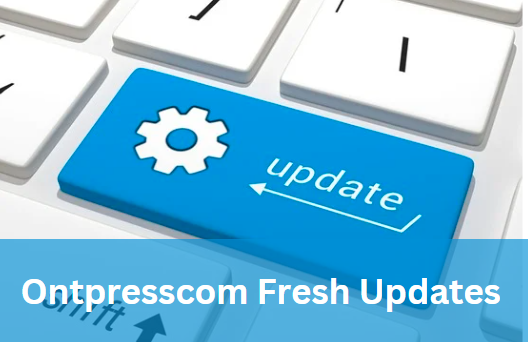Environmental Impact: How Prepaid Electricity Supports Energy Conservation
In recent years, the global focus on environmental sustainability has prompted individuals and businesses to explore innovative ways to reduce their carbon footprint. One such innovation gaining popularity is prepaid electricity, a payment model that not only provides financial control but also aligns with the principles of energy conservation. In this article, we will delve into the environmental impact of prepaid electricity and how this approach supports energy conservation efforts.
Understanding Prepaid Electricity: A Sustainable Payment Model
Prepaid electricity, also known as pay-as-you-go electricity, represents a departure from traditional billing models. Instead of receiving a monthly bill based on estimated usage, consumers pay for electricity in advance, purchasing a specific amount of credits. The prepaid meter deducts the corresponding amount as energy is consumed, offering users real-time visibility into their usage patterns.
Reducing Energy Waste through Awareness
One of the significant advantages of prepaid electricity is the heightened awareness it brings to individual energy consumption. Users can monitor their electricity usage in real-time, receiving instant feedback on the impact of their habits. This heightened awareness serves as a powerful tool for energy conservation, encouraging users to adopt more responsible and sustainable practices.
Empowering Users to Set Consumption Goals
Prepaid electricity enables users to set specific energy consumption goals based on their needs and priorities. By defining a monthly or weekly usage target, individuals are more likely to be conscious of their energy consumption habits. This empowerment fosters a sense of responsibility, turning consumers into active participants in the quest for energy conservation.
Encouraging Energy-Efficient Appliance Choices
The environmental impact of prepaid electricity extends to the choices consumers make regarding their appliances. With a direct connection between usage and cost, individuals are incentivized to invest in energy-efficient appliances. The long-term benefit lies not only in financial savings but also in the reduced strain on energy resources and a smaller overall environmental footprint.
Mitigating Phantom Energy Drain
“Phantom” or “standby” energy consumption occurs when electronic devices continue to draw power even when turned off but left plugged in. Prepaid electricity users, conscious of the immediate cost implications, are more likely to unplug devices when not in use. This small habit can lead to significant energy savings and a notable reduction in overall environmental impact.
Optimizing Energy Use with Timers and Smart Technology
The integration of timers and smart plugs is another aspect of prepaid electricity that contributes to environmental conservation. Users can schedule the operation of appliances during off-peak hours or when renewable energy sources are more abundant. This optimization not only reduces electricity costs but also aligns with the broader goal of minimizing the environmental impact of energy consumption.
Cultivating Energy-Efficient Cooking Practices
Prepaid electricity encourages users to adopt energy-efficient cooking practices, recognizing that the cost of cooking directly correlates with energy consumption. From using lids on pots and pans to minimizing oven preheating time, these practices not only save money but also contribute to a more sustainable lifestyle by reducing the demand on energy resources.
Promoting Household Education on Energy Conservation
The prepaid electricity model inherently fosters a culture of energy conservation within households. As users become more accustomed to monitoring their usage and making conscious choices, this knowledge is shared and disseminated among family members. Education on energy conservation becomes an integral part of daily life, creating a ripple effect that extends beyond individual households and contributes to a broader societal shift towards sustainability.
Encouraging Regular Home Maintenance for Energy Efficiency
Prepaid electricity users are more likely to invest time and effort in regular home maintenance to optimize energy efficiency. Simple measures, such as sealing drafts around windows and doors or properly insulating the home, can lead to substantial energy savings. The resulting decrease in energy demand aligns with environmental conservation goals by reducing the overall strain on energy production and distribution systems.
Taking Advantage of Off-Peak Hours for Reduced Environmental Impact
Certain prepaid electricity plans offer varying rates during off-peak hours, promoting the efficient use of energy resources. Users can strategically schedule energy-intensive tasks, such as laundry or dishwashing, during these periods, leveraging lower costs and contributing to a more balanced and sustainable energy grid.
Budgeting Wisely for Long-Term Environmental Sustainability
The upfront nature of prepaid electricity payments encourages users to budget carefully for their energy expenses. This financial planning not only prevents unexpected disruptions in service but also aligns with principles of environmental sustainability. By avoiding excessive energy usage and waste, prepaid electricity users contribute to the overall health of the planet and its ecosystems.
Conclusion: Prepaid Electricity as a Catalyst for Environmental Responsibility
In conclusion, prepaid electricity emerges as more than just a financial innovation; it is a catalyst for environmental responsibility. By fostering awareness, empowering users to set consumption goals, and encouraging energy-efficient practices, prepaid electricity aligns seamlessly with the global imperative for energy conservation. As individuals become more mindful of their energy use, the collective impact contributes to a more sustainable future—one where responsible consumption is not only a personal choice but a shared commitment to preserving the health of our planet. Through the lens of prepaid electricity, we witness the transformation of a billing model into a powerful tool for environmental change.






